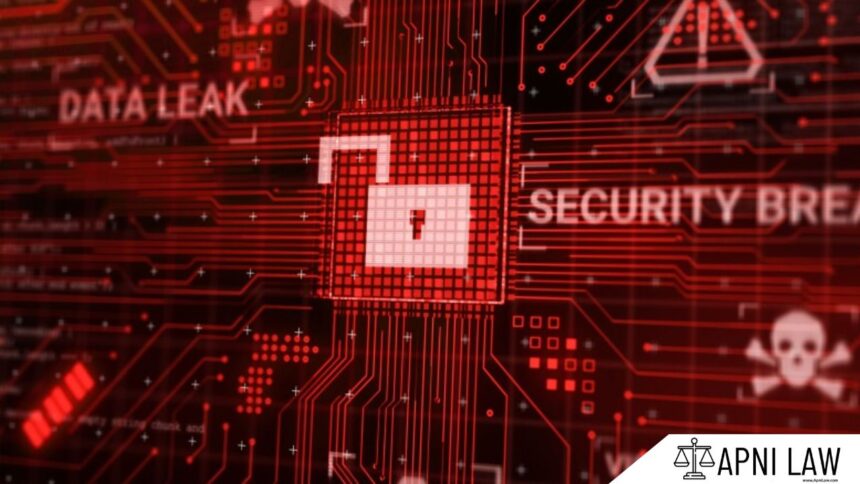Introduction
“If any person without permission of the owner or any other person who is in charge of a computer, computer system or computer network— (a) accesses or secures access to such computer, computer system or computer network; (b) downloads, copies or extracts any data, computer database or information from such computer, computer system or computer network including information or data held or stored in any removable storage medium; (c) introduces or causes to be introduced any computer contaminant or computer virus into any computer, computer system or computer network; (d) damages or causes to be damaged any computer, computer system or computer network, data, computer database or any other programs residing in such computer, computer system or computer network; (e) disrupts or causes disruption of any computer, computer system or computer network; (f) denies or causes the denial of access to any person authorized to access any computer, computer system or computer network by any means; (g) provides any assistance to any person to facilitate access to a computer, computer system or computer network in contravention of the provisions of this Act, rules or regulations made thereunder; (h) charges the services availed of by a person to the account of another person by tampering with or manipulating any computer, computer system, or computer network; (i) destroys, deletes or alters any information residing in a computer resource or diminishes its value or utility or affects it injuriously by any means; (j) steals, conceals, destroys or alters or causes any person to steal, conceal, destroy or alter any computer source code used for a computer resource with an intention to cause damage— he shall be liable to pay damages by way of compensation to the person so affected.”
What Does Section 43 Mean?
Section 43 of the Information Technology Act, 2000 addresses civil liability for unauthorized use of computer resources. It penalizes acts such as unauthorized access, data theft, system disruption, virus introduction, and manipulation of computer networks. Unlike Section 66, which deals with criminal punishment when there is dishonest or fraudulent intent, Section 43 focuses on compensation. A wrongdoer must pay damages to the affected party. Courts can direct compensation up to five crore rupees depending on the scale of harm.
This section plays a role in protecting digital infrastructure in India. It applies to individuals, employees, companies, and even service providers. With cybercrime increasing, understanding and following Section 43 is essential for both personal users and organizations.
What Are the Risks Under Section 43?
Section 43 covers a wide range of risks. Unauthorized access to systems without consent is one of the biggest. Downloading or copying data without permission also falls within its scope. Introducing computer viruses or malicious code is another major risk. If someone damages, deletes, or alters information in a system, it attracts liability.
Disrupting networks or denying access to authorized users also counts as an offence. Tampering with accounts or charging services to another person unlawfully also violates Section 43. Even providing assistance to others in committing such acts is punishable. These risks affect individuals, companies, and even government departments.
How Can Individuals Protect Themselves?
Individuals can protect themselves by practicing strict cyber hygiene. They should always use strong passwords and avoid sharing them. Regular updates of operating systems, browsers, and applications reduce vulnerabilities. Installing reliable antivirus software and performing frequent scans helps prevent malware attacks.
People should avoid downloading files from unknown sources. They should not use public Wi-Fi for sensitive transactions unless secured through VPNs. Devices must be locked when not in use to prevent unauthorized access. Storing backups of important files in safe external drives or secure cloud storage ensures recovery after data loss.
By being alert and cautious, individuals reduce their exposure to Section 43 liabilities. Even accidental violations, if documented and reported, can help show good faith and reduce consequences.
How Should Organizations Safeguard Their Systems?
Organizations face higher risks because they operate multiple systems and store large volumes of sensitive data. They must adopt technical and administrative safeguards. Access control policies should restrict entry only to authorized employees. Multi-factor authentication must be used for critical systems. Regular audits and monitoring of access logs help detect unusual behavior.
Companies should maintain strict policies on data handling. Employees must be trained on cyber laws and Section 43 consequences. Backup strategies, both on-site and off-site, must be in place to ensure business continuity. Firewalls, intrusion detection systems, and encryption protect confidential data.
Organizations must also establish incident response teams. Quick reporting and documentation of suspected breaches help minimize damage and demonstrate compliance during investigations.
What Legal Precautions Are Necessary?
Legal compliance forms another layer of protection. Individuals and companies must ensure that they have clear consent before accessing or modifying someone else’s system or data. Consent can be digital or written but must be explicit. Maintaining records of access permissions, audits, and user agreements can act as evidence.
Employers should implement detailed IT usage policies. These policies must cover acceptable use, monitoring, and reporting channels. Employees must sign acknowledgment forms after training. In case of disputes, such documentation helps demonstrate compliance with Section 43.
Organizations must also stay updated with government notifications, IT Act amendments, and case law. Legal awareness minimizes risks of accidental violations.
What Should Be Done if a Violation Happens?
If an individual or company suspects unauthorized access, immediate action is crucial. The first step is to report the matter to the system owner or IT head. The incident should be documented with time, date, and description. Screenshots, log files, and technical reports should be preserved.
If the violation appears serious, law enforcement or a cybercrime cell must be notified. Quick reporting reduces liability and demonstrates responsibility. In cases where access was accidental, a transparent record of mitigation steps can help in court.
For companies, incident response teams should isolate affected systems, contain the breach, and restore functionality. Communication with affected clients or partners builds trust and reduces reputational damage.
How Have Courts Applied Section 43?
Indian courts have repeatedly applied Section 43 in cyber disputes. In some cases, companies had to pay compensation for data theft by employees. Courts have held that even temporary disruptions of systems can attract liability.
For example, in cases where viruses were intentionally introduced into networks, courts imposed heavy damages. In disputes involving unauthorized downloads of confidential business data, employees faced civil compensation orders. Judicial interpretation shows that courts take a strict view of unauthorized access, regardless of intent.
Why Is Awareness of Section 43 Important?
Awareness of Section 43 helps both individuals and organizations avoid costly mistakes. Many users remain unaware that even downloading or copying files without consent can attract liability. Some employees assume that accessing internal files is harmless, but courts may treat it as unauthorized.
With digital dependency growing, ignorance of law cannot serve as a defense. Educating users about cyber hygiene, lawful access, and penalties helps reduce disputes. Companies must treat awareness programs as part of compliance culture.
For any specific query call at +91 – 8569843472
Conclusion
Section 43 of the IT Act, 2000, provides a civil remedy for unauthorized access, damage, or disruption to computer resources. It emphasizes compensation for affected parties rather than criminal punishment. Individuals must secure their systems with strong passwords, regular updates, and backups. Organizations must implement strict access policies, legal safeguards, and training.
Courts have shown zero tolerance for misuse of computer systems. Protecting against Section 43 liability requires vigilance, legal awareness, and technical safeguards. By adopting these practices, individuals and organizations strengthen cybersecurity and stay compliant with Indian law.








